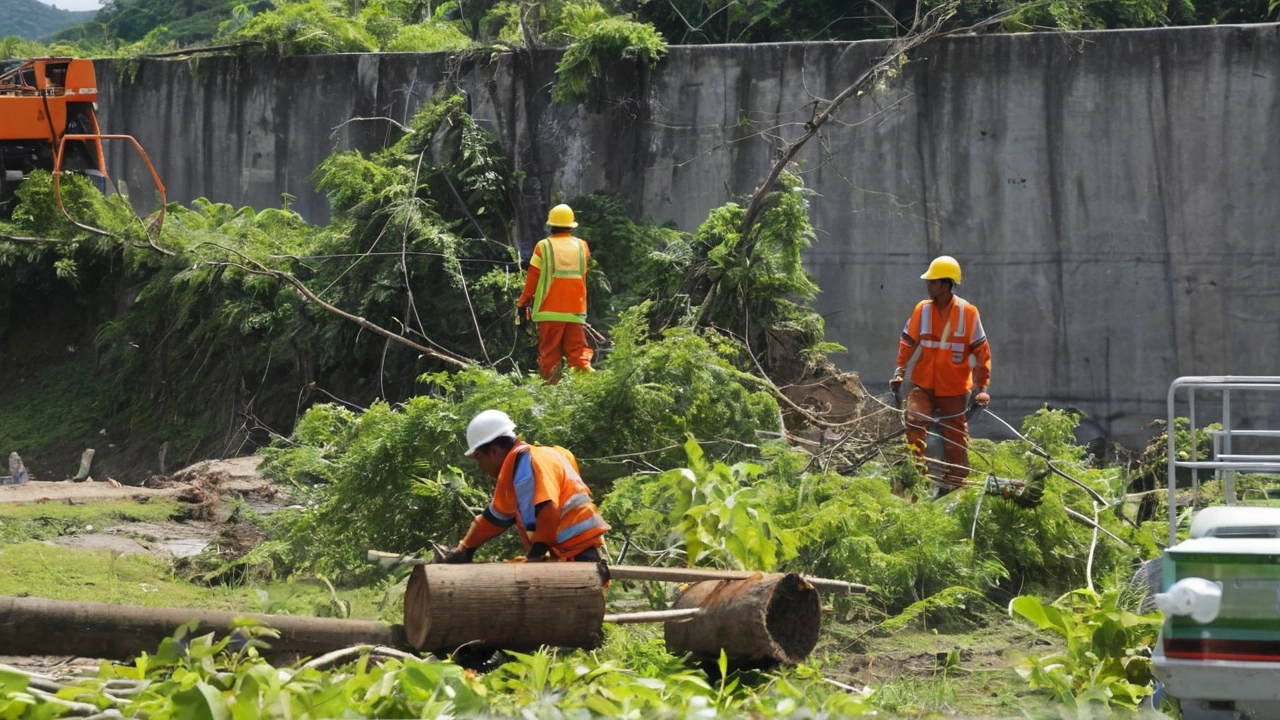Samal-Davao Bridge Tree Cutting Controversy Explained
When you hear about a new bridge, you probably picture smoother commutes and boosted trade. But the Samal-Davao Bridge project has sparked a different conversation—one about hundreds of trees being cut down without a proper permit. The Department of Public Works and Highways (DPWH) is at the center of this storm, and the local community is asking: does progress have to mean losing green space?
What Happened on the Ground?
According to reports, DPWH crews cleared roughly 200 trees along the proposed bridge route in the Samal area of Davao. The twist? They did it without the environmental clearance usually required for such large‑scale work. Residents and environmental activists quickly caught wind of the action and flooded social media with photos and complaints. For many, the loss isn’t just about missing shade—it’s about the lungs of their neighborhood being stripped away.
Why the Bridge Matters
The bridge aims to link Samal Island with mainland Davao, cutting travel time dramatically. Farmers, merchants, and tourists could all benefit from a shorter, more reliable route. Proponents argue the economic boost will create jobs and open new markets, especially for local produce that currently faces ferry delays. In a region where logistics can be a daily headache, a sturdy bridge feels like a game‑changer.
That said, the promises of growth don’t automatically erase the concerns. Cutting trees without an environmental impact assessment sidesteps a crucial check: how will the change affect flood risk, soil stability, and biodiversity? Experts say that removing mature trees can lead to increased runoff, which may worsen flooding—an irony when the bridge is supposed to improve safety.
Communities are also worried about the precedent this sets. If authorities can skip permits for one project, what's to stop similar shortcuts elsewhere? The sentiment is clear: development should follow rules, not the other way around.
DPWH has responded by saying the tree removal was a “necessary step” to keep the project on schedule. They claim that re‑planting efforts are planned for later stages, though details remain vague. Critics point out that re‑planting isn’t a fix for the immediate loss of mature canopy, especially when the species being cut are native and long‑standing members of the ecosystem.
So, what can be done? First, a transparent review of the permits—real or missing—should be made public. If the permits were truly overlooked, a rapid audit could restore trust. Second, involve local stakeholders in a revised environmental plan. Community members often know which trees are most critical and can suggest alternative routes or mitigation measures.
Third, adopt a “green bridge” mindset. That means integrating landscaping into the bridge design itself—think vertical gardens, shade canopies, and planting native species alongside the structure. Not only does this soften the visual impact, but it also helps offset the ecological loss.
Finally, keep the conversation alive. Social media buzz sparked the debate, but sustained engagement—through town hall meetings, newsletters, or local radio—ensures that promises are followed up on. When people feel heard, they’re more likely to support the project’s long‑term benefits.
In short, the Samal-Davao Bridge could bring real economic uplift, but it shouldn’t do so at the expense of the environment and community trust. By demanding proper permits, transparent planning, and meaningful green measures, residents can help shape a project that works for both people and nature.
Controversy Erupts Over Tree Cutting for Samal-Davao Bridge Project
The Department of Public Works and Highways (DPWH) is under fire for cutting around 200 trees without an official permit for the Samal-Davao Bridge Project, sparking environmental concerns among local communities and activists. Despite the potential economic benefits of the project, the incident has fueled a heated debate over balancing infrastructure development with environmental conservation.

